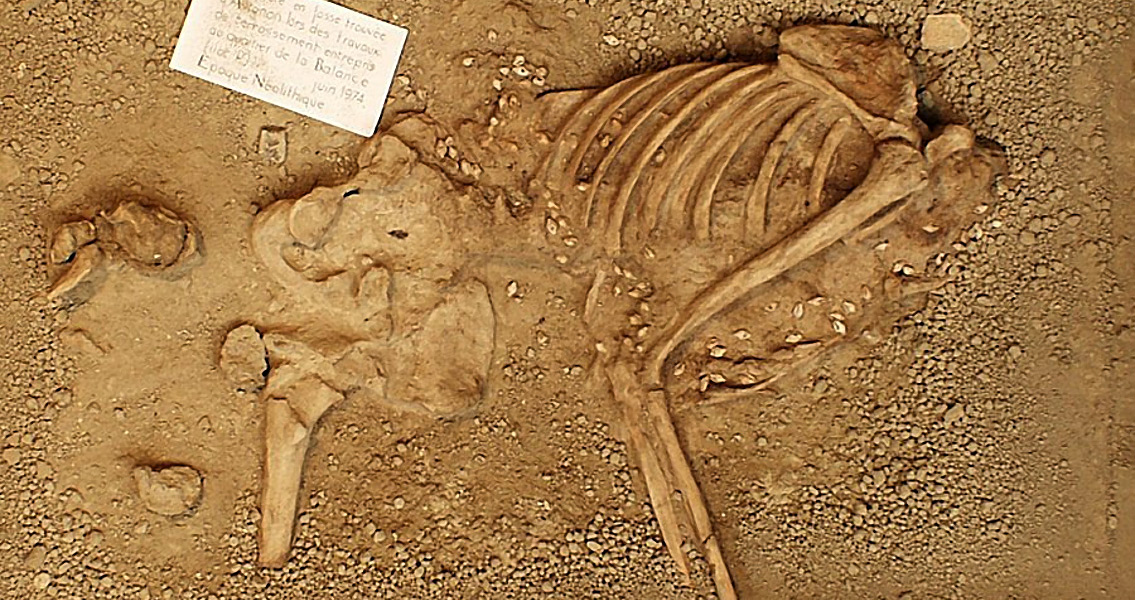<![CDATA[For the first time, a garment from the early Mediterranean Neolithic has been studied using cutting edge technology in a modern laboratory. The research team, with the Bordeaux Montaigne University in France, used 3D laser recording along with field anthropological methods. The garment, believed to be a tunic or jacket, belonged to a man buried between 4950 and 4800 BCE in Avignon, a city located in the Provence region of southeastern France. Researchers were able to identify sophisticated embroidery that included 158 red-colored, conical Columbella rustica (a species of sea snail) shells along with 16 canines from a red deer. The shells had been arranged in patterns, either all pointing down, up, or in alternating pairs. Although the garment's cloth had decayed, the hard shells remained in their original arrangement surrounding the body. The 16 deer teeth were found sewn onto the garment at approximately chest level, and chemical analysis suggests they may have been painted red. Although the team was able to reconstruct the garment’s design, a majority of the body itself was missing, including most of the legs, the hands, and the skull. This is the result of both medieval and modern destruction, the study reports, due to the building of a wall in modern times and the digging of a nearby pit during the Middle Ages. Pieces of the body’s severed forearm were found in the pit. "Burials like this are not so common, but there is a diversity of burial practices in this period," archaeologist Aurélie Zemour, the study author from Bordeaux Montaigne University, said in an article published by the IBTimes UK. “The presence of red deer canines is unique in the region, and the combination with columbella is unique too,” adding, “This burial is also important because there burial constructs containing grave goods are rare. But the materials worn by the dead here are obvious and ornaments are visible. The burial is exceptional.” The single, isolated grave was discovered and partly unearthed in the 1970s, with various artifacts from it exhibited and then stored at the Calvet Museum. The grave’s rediscovery in 2009 revealed that the deceased male had been buried in primary deposition with no preserved architectural features. Using calibrated AMS dates researchers were able to reliably date the garment to the early 5th millennium BCE, which reinforces existing evidence of long distance relationships between the Neolithic cultures in Europe. Avignon and the surrounding region have been inhabited since the Neolithic, evidenced by the discovery of a small anthropomorphic monument carved from Burdigalian sandstone in the shape of a tombstone. This stele is believed to represent the first Avignonnais and dates from the Copper Age to the Early Bronze Age, a period which is referred to as the southern Chalcolithic. The face of the stone is engraved with a stylized human figure that has no mouth, and eyes marked by small holes. At the bottom there’s a deep indentation that has eight radiating lines that form a representation of the sun, unique for this type of monument. Other findings from this time period include two polished axes made from greenstone, several Chalcolithic objects used for adornment and numerous shards of Hallstatt pottery. The study has been published in the Journal of Field Archaeology. Image courtesy of Aurélie Zemour ]]>
First Ever Study of a Garment from the Mediterranean Neolithic
